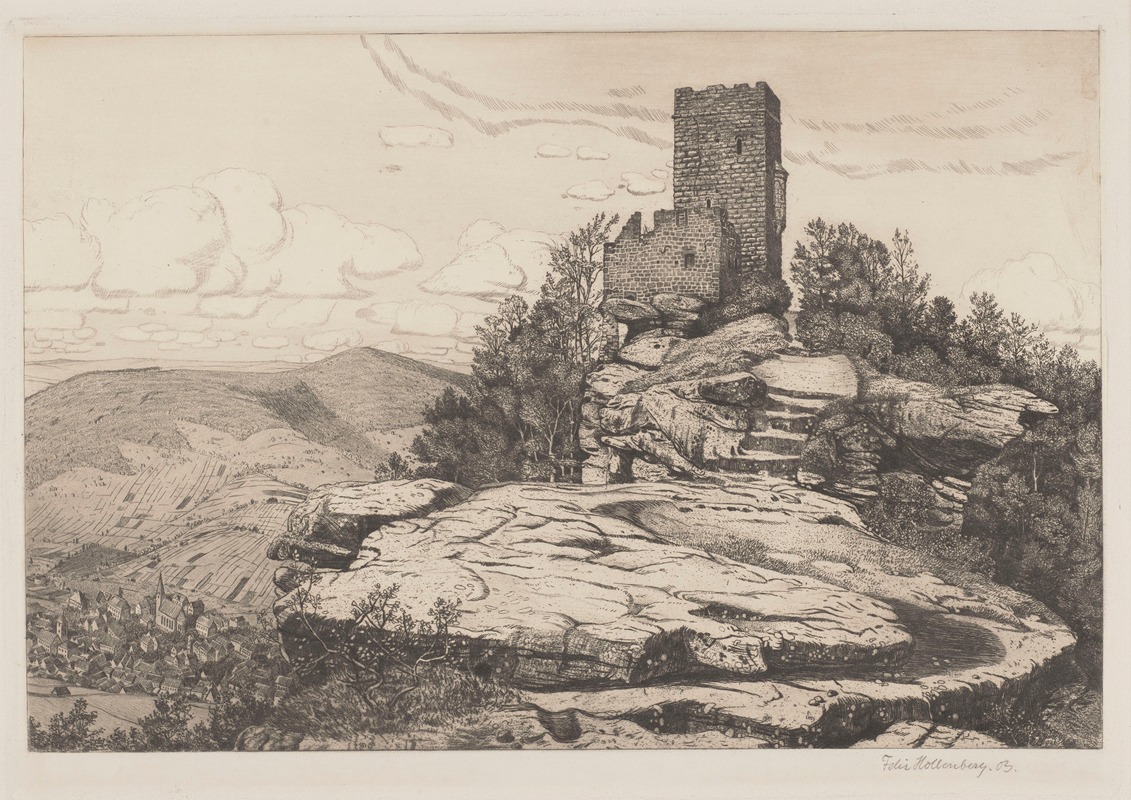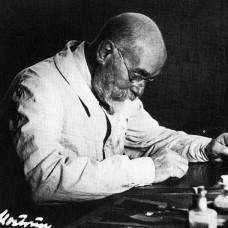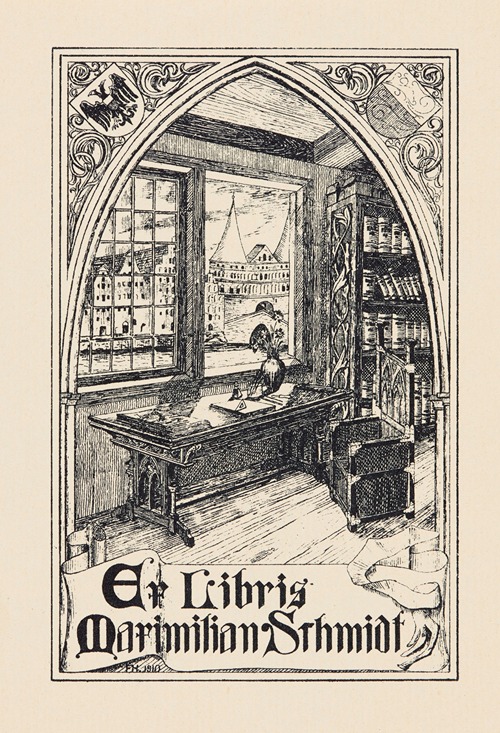

Felix Hollenberg was a German painter and etcher. He is considered one of the most important landscape etchers of the 19th and 20th centuries.
Felix Hollenberg was the son of engineer August Hollenberg (1835–1900). He received his schooling at home. His artistically gifted father also gave him his first lessons in drawing and watercolor painting. From 1887 to 1888, he attended Heinrich Lauenstein's drawing class at the Düsseldorf Art Academy. However, his application for admission to the academy was rejected by the teaching staff. In the spring of 1888, the family moved to Stuttgart, where his father took up a new position as editor of a technical journal. From 1888, Hollenberg studied at the Stuttgart Art School under Jakob Grünenwald and Albert Kappis. During his studies, he cultivated friendships with fellow painters Erwin Starker and Friedrich Zundel, as well as the latter's wife Clara Zetkin. In 1891, Hollenberg completed his one-year voluntary military service. He finished his studies in 1896 and settled in Stuttgart as a freelance artist.
Hollenberg focused on landscape painting and etchings. He was awarded a gold medal at the 1900 Paris World's Fair for his etching “After Sunset.” In 1901, the Stuttgart Copper Engraving Collection purchased 15 drawings and etchings. The Staatsgalerie Stuttgart acquired the oil painting “Mittag im Mai” (Noon in May) in 1906. Hollenberg himself kept a “list of original etchings” for his graphic work from 1905 onwards.
In 1907, Hollenberg married the concert singer and pianist Erna Bienemann, with whom he had three children.
From 1916, Felix Hollenberg worked on a handbook for painter-engravers. By studying old handbooks and drawing on his own experience, he wanted to convey the technical finesse of etching.
Felix Hollenberg found the “intimate” beauty of his native landscape. His work is considered a link between Liebermann's impressionist graphics and those of the Expressionists. He often drew his motifs outdoors, directly from nature onto the plate.


